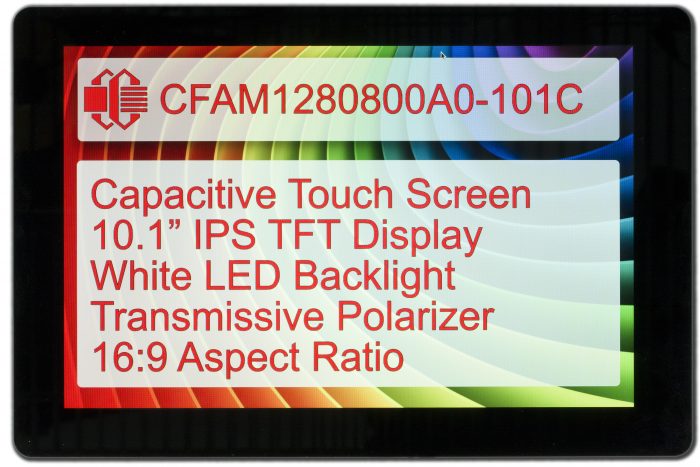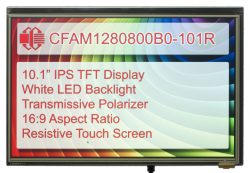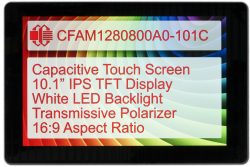
FAQ: Capacitive or Resistive Touch?
22/08/11 – This topic was covered in greater detail in this blog post: Resistive Touch vs. Capacitive Touch
What is the difference between a resistive and a capacitive touch screen?
The biggest difference a user will notice between a resistive and a capacitive touch screen is that a resistive touch screen can only detect one touch at a time.
A capacitive touch screen can detect multiple touches at the same time.


There are many other differences between a resistive and a capacitive touch screens– let’s compare some touch screen properties, and how they are different between resistive touch screens and capacitive touch screens.
| Function | Resistive | Capacitive | Comments |
|---|---|---|---|
| Number of simultaneous touch points |
One |
Commonly two to five, up to 10 |
Two or more simultaneous touch points allow the popular “pinch” moves to zoom |
| Works with gloves |
Yes |
No |
A capacitive touch screen depends on a conductive contact. Your finger works well, or the end of a wrench you are holding . . . but non-conductive objects like a gloved finger or the plastic handle of a screwdriver will not be detected. A resistive touch screen only depends on force, it does not care what is creating the force. |
| Durability |
Lower |
Higher |
A resistive touch screen is composed using thin, tough plastic membranes. While these are rugged, they can be scratched and become foggy with use. A capacitive touch screen’s outer layer is glass and is therefore quite abrasion resistant — though glass is subject to breaking under impact. To be fair, the display just behind a resistive touch screen is typically also glass, so an impact can damage a resistive touch screen as well. |
| Transmissivity |
Lower |
Higher |
A capacitive touch screen blocks less light than a resistive touch screen, allowing more light to pass through. |
| Distortion |
Higher |
Lower |
The glass of a capacitive touch screen is optically flat, allowing the display to be seen very clearly. A resistive touch screen typically has a slight “anti-glare” texture to the surface that can slightly blur the display. |
| Cost |
Lower |
Higher |
Resistive touch screens are still lower cost, but the gap is shrinking |
| Interface |
Analog |
Digital |
The interface to a resistive touch screen is typically accomplished with two digital ports and two analog ports of your microcontroller, along with a few lines of code. Typically this interface adds zero incremental cost to the project. A capacitive touch screen uses something called Projected Capacitance to detect your finger. Projected Capacitance takes orders of magnitude more finesse to read it, and so most capacitive touch screens have a dedicated IC bonded to their flexible printed circuit (FPC) to handle the added complexity. While this IC increases the cost of the touch screen, it can make communication easier by using the I2C interface. Typically you read of a bank of registers on the IC, one register contains the number of points touched, and others registers follow with X and Y coordinate pairs of each point. |
| Calibration |
Needed |
Factory |
A resistive touch screen will need to be calibrated, at least once, before shipping to the customer. Most capacitive touch screens are pre-configured to work with their mated display–the calibration information stored in the IC–so that end-user calibration is not necessary. |
In Summary
Resistive touch screens have been the main choice for embedded system touch screens for decades, and are still a reliable choice.
As capacitive touch screen functionality increases and costs continue to come down, you can expect to see many more embedded displays available with touch screens in the near future.
Need help choosing the best display for your project?
The Crystalfontz tech team is here to help and can assist you in finding the best display for your project. Please contact our friendly sales and support team — ready to answer any questions that you may have about these touch display modules or any the displays in the Crystalfontz catalog.